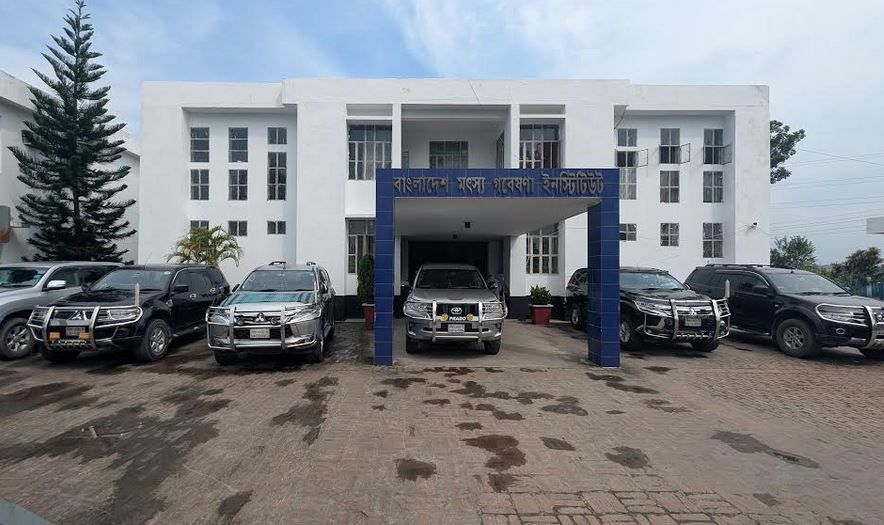News Flash
News Flash

By Md. Sakib Al Taniul Karim Jim
BANGLADESH AGRICULTURAL UNIVERSITY, Oct 14, 2025 (BSS) - The Bangladesh Fisheries Research Institute (BFRI) is bringing revolutionary changes to the country’s fisheries sector. From the revival of endangered native species to the development of new varieties and advanced technologies for seaweed and eel cultivation, the institute continues to write new chapters of success.
Established in 1984, BFRI is currently the only national fisheries research institute in Bangladesh. Headquartered in Mymensingh, it operates specialized research centers in Chandpur, Khulna, Cox’s Bazar, Bagerhat, and Rangamati.
Ongoing research at BFRI includes broodstock improvement and breeding of the mahashol fish, conservation of native species, gudgeon shrimp farming, koi (Climbing perch) breeding technology, eel fish breeding, and environment-friendly “bottom clean unit” projects. These initiatives contribute not only to fish production but also play a crucial role in conserving the country’s biodiversity.
Through relentless research, BFRI has successfully restored more than 18 endangered fish species, including tengra, pabda, gulsha, shing, magur, mahashol, and eel. To preserve the genetic resources of these species, the institute has established an advanced ‘Live Gene Bank’, which offers new hope for conserving Bangladesh’s aquatic biodiversity for future generations.
Through genetic research, BFRI has developed an improved strain of rohu fish named ‘Subarna Rui’, which has 16–20 percent higher productivity than traditional varieties. The institute has also developed a disease-resistant vaccine for koi fish, artificial breeding technology for eels, and a ‘Mechanical Fish Dryer’ that produces safe and high-quality dried fish. In addition, BFRI hosts a pearl research center and a fisheries museum.
To ensure sustainable production of the national fish, hilsa, BFRI is implementing the ‘Strengthening of Hilsa Research’ project. Under the supervision of the Chandpur River Research Center, new sanctuaries have been identified and significant progress has been achieved in conserving jatka (juvenile hilsa). Experts note that these initiatives have contributed to a 50 percent increase in hilsa production in Bangladesh.
In the coastal region, BFRI has achieved groundbreaking success in the cultivation of brackish water tengra, parshe, crab, and seaweed. Experimental seaweed farming in the coastal areas of Cox’s Bazar and Teknaf has yielded more than 1 kg per square meter. Meanwhile, a project to expand eel farming technology in the hill tracts is creating new economic opportunities for local communities.
According to researchers, the Giant Pangas species of the Mekong River is now being successfully reared at BFRI. The fish generally weighs 120–140 kg, with some broodstock exceeding 200 kg. Scientists believe that developing a domestic broodstock for this species could bring a new revolution in the country’s fisheries sector.
BFRI’s over 80 technologies are directly contributing to the increase in national fish production. At present, the fisheries sector accounts for 3.61 percent of the country’s total agricultural output, with BFRI’s research and technologies serving as major pillars of support.
Talking to BSS, BFRI Director General Dr. Anuradha Bhadra said, “Our goal is not just fish production, but ensuring sustainable food security and biodiversity conservation. Our aquatic resources are our future, so we are expanding the scope of our research further.”
Through its ongoing research, innovations, and training programs, BFRI has elevated Bangladesh’s fisheries management to new heights. According to experts, BFRI now serves as one of the main foundations for realizing the country’s Blue Economy, playing a pivotal role in achieving the Sustainable Development Goal (SDG 14) — conservation and sustainable use of marine and aquatic resources.